The Entrepreneur Who Left a Cushy Tech Job To Be His Own Boss
When Vlad moved from Ukraine to the United States, his end goal was to start a business.
But the steep learning curve and time-consuming process meant he needed to secure a job to pay the bills while he worked it all out.
So he did. He got a job at eBay, one of the biggest tech companies in the world.
When he finally had enough money saved up, he quit – a decision that many thought was crazy – and launched his own business.
Today, he's the proud owner of a business (not his first) that brought in over $200,000 in sales last year. But this success isn't without its ups and downs.
Vlad joins us today on Start Yours to share with us his journey to success and the lessons he's learned along the way.
If you're just starting out and need some insights on finding dropshipping success, you should definitely tune in.
Don't forget to subscribe to our podcast and check out our blog for more success stories like Vlad's.
Short on time? Here's a seven-point TL;DR version of Vlad's story and takeaways.
- Vlad's first venture failed because of a disagreement with his co-founder, who had a completely different mindset from him.
- Print-on-demand is a good business model and can work if you know how to spot and jump on new trends quickly enough.
- To succeed, you have to be smarter than 95 percent of the people you're competing with.
- Becoming a better entrepreneur requires learning how to do things and manage stress at the same time.
- There are two types of dropshippers: the ones that are always testing products and the ones that force a winner by making small, compounding improvements.
- When you start selling a product, make sure you have back-up suppliers.
- General stores, one-product stores, and niche stores all work. You just need to know what you're doing and how to market the products.
Start Yours is a podcast about ecommerce, dropshipping, and all things launching a business.
Join us as we meet entrepreneurs who have gone through the triumphs and headaches of running an online store, and learn how they managed to survive and thrive.



Setting up Camp in the US and Leaving a Comfy Job
Aleisha: Okay, Vlad, tell me a little bit about you moving from Ukraine to the United States, and how that all came to be, and what was the goal when you took that leap.
Vlad: Yeah, I always wanted to start my own business, and the United States, this country just seems like... It's probably one of the best places in the world where you can start a business because, well, first of all, there are lots of entrepreneurs that build their own companies, they wanna launch something, and there is a huge community of people that’s really passionate about what they do.
→ Click Here to Launch Your Online Business with Shopify
There is always something going on and a lot of people have meet-ups and you can just find a lot of like-minded individuals that you can learn from, also people that you can help with your experience, and it's just a good place to be in if you want to start a business.
And obviously you can start a business in a country like Australia or Europe. But to me, it seems like it's gonna be a little bit harder because, well, first of all, let's say in Europe, there are things like language barriers and also higher taxes. So to me, it doesn't seem impossible, it's just a little harder.
So I think moving to the United States was the right first step to starting a business for me, for sure.
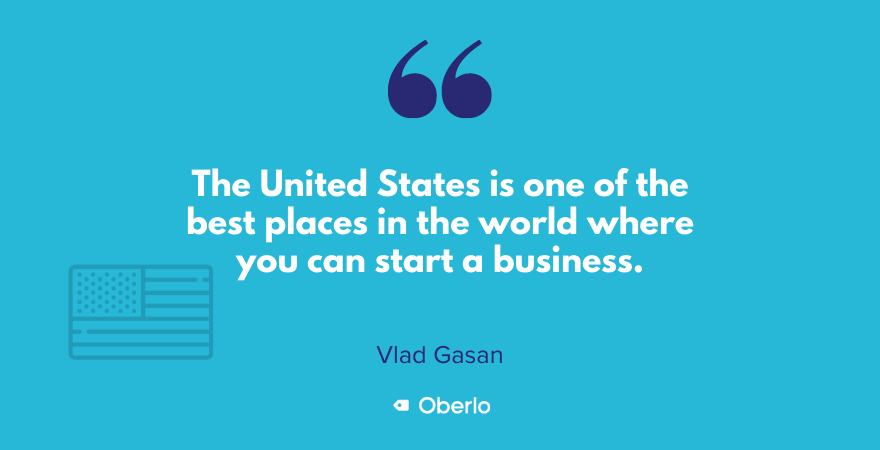
Aleisha: Yeah, and so when you got to the States, you scored a really good... I don't wanna say score, you earned with your skills, a pretty tidy job at eBay. A lot of people would hear that story and go, "Well, this is the pinnacle now, you're working with one of the biggest tech companies in the world and that should be the end of it."
But that really wasn't the path that you chose. Tell me a little bit about how you got that job, but then also, how you ditched that job.
Vlad: Yeah, I always wanted to be an entrepreneur, and this is actually, again, the reason why I moved to the United States. And in the beginning, I knew that the United States, it's a very expensive country, especially here in Silicon Valley, it's even more expensive, and I live in Silicon Valley right now.
So you can't just sit around and do business and wait for it to become profitable. You need money to pay bills. Eventually, I landed this gig at eBay, and yeah, for some people it might seem like a dream job where you get paid well, a six-figure salary, a lot of perks; you have free food, a nice office, a great laptop, a big monitor, and all that stuff.
But to me, it always felt like something was missing. It's like, "Yeah, I have this good job," and being a software product manager is fine, you're working on a bunch of cool things, you're building different products, you work with engineers, designers, developers, and you just manage the process.
And it's cool, it's fun. But I always had this feeling that something was missing and I wanted to be more entrepreneurial, I wanted to be my own boss.
Because even though I had a lot of autonomy at eBay, I was allowed to set my own path, create a strategy for the products I built, I still had to report to my boss, I had a lot of different responsibilities, and it just didn't feel right for me.
So that's the reason why I decided, you know what, now I saved up a lot of money... Well, not a lot of money, but enough money to quit my job and actually try to build a real business.
And yeah, in the beginning, actually, I thought because I'm in Silicon Valley, it would make sense to build a software company because I already have experience building software, I know how to do it, I know how to hire people, how to build software, how to launch and all that stuff, I have a lot of experience doing it. So I thought, okay, maybe I can find a partner, we can raise some money, build a software company, and become one more Silicon Valley success.
Yeah, but unfortunately, it didn't go as I planned. Yeah, and as I know, probably only one percent or less of all startups survive. So this was also my case, but the reason why my company didn't survive is that we had a disagreement with my co-founder. As a result, I realized that we just have different mindsets that are not very compatible and it just became increasingly harder and harder for us to work together.
Finding a Business Partner
Aleisha: So you had a falling-out with your business partner, or you just didn't align, I suppose. Are you working with anyone now? 'Cause I think it's always interesting when you find someone to do business with, you really... It's like being in a romantic relationship, I suppose, as well; you want it to be... You both wanna bring your stuff to the table, but also it doesn't always work.
Vlad: Yeah, so I think finding a partner for a business is even harder than finding someone you wanna marry. I think, personally, and again, a lot of people might disagree with me but I think building a family is easier than building a business because a lot of people build families like they already know what they want, kind of, in a way.
For example, some people wanna have kids, some other people don't wanna have kids, but most of the time, people know what they want out of their relationship.
With business, it's a little harder. One thing that was especially hard for me was making sure that my co-founder and I understood each other and that we could actually work together.
Because this application that we wanted to build, this software product was... It's a baby, and this baby, it's supposed to grow super fast and it's always changing, and there are so many things you need to think about and take care of.
You need to build the application, you need to make sure that people use it, you need to take care of finance, accounting, you need to raise money, you need to hire people, you need to make sure that these people do the job that they were hired for.
So there are so many things that we, as a team, had to take care of, and it was super stressful. And when there is too much stress, this is when you see what... Like you see qualities that you haven't seen before in the person you're working with.
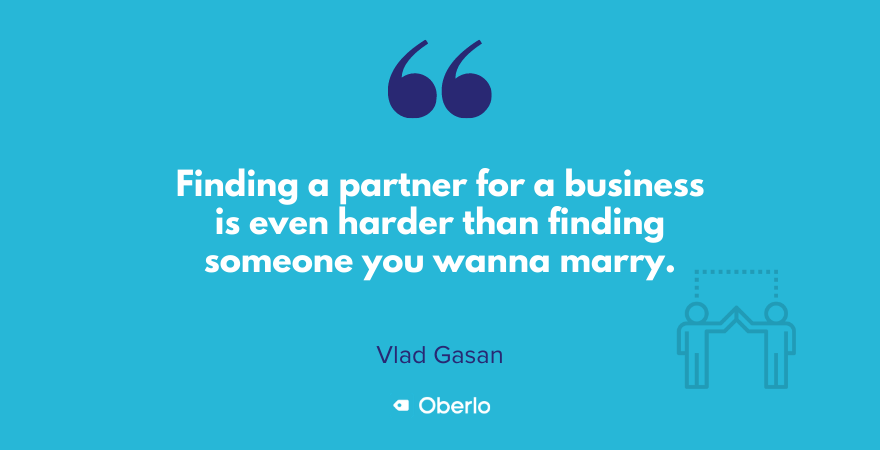
Aleisha: Yeah, it really brings out people's best and worst, doesn't it, really? Yeah.
Vlad: Yeah, people act differently under pressure, and when you have too much pressure, sometimes people crack and that's when things start falling apart. So that's pretty much what happened to us and kind of like our love journey was very short.
Aleisha: Yeah, it's like, I suppose, the stressful environment is like the couple's equivalent of going to IKEA and just seeing how insane your partner might actually be, or how you cope with it.
Vlad: Yeah. Yeah, yeah, yeah, exactly. It's actually a good example. It's like when you're picking a new bed or something like that and then you get into a quarrel with your partner. Yeah, it's kind of like that. But yeah...
Chancing Upon Print-on-Demand
Aleisha: Exactly. There are extra screws, what happens then? So, you disbanded this partnership, but then you were without a job. So you started a print-on-demand store after you saw dropshipping being advertised.
Like a lot of people, you watched a lot of videos and you did a course. Tell me about print-on-demand 'cause it's something that I think a lot of people jump into and go, "I can make T-shirts. I'll make a million dollars," and then it's just a bomb.
Vlad: Yeah, yeah, actually... Yeah, so I was just sitting in my apartment thinking, "Okay, what should I do? Should I look for a new job? Should I start a new business?" And you know, I was kind of confused and thinking, “What should I do?”
And then I just started scrolling through my feed, just checking the updates, pictures of my friends' posts, and then I saw this ad that advertised the print-on-demand course, and I think it was priced at $1,000.
And back then I thought, "Oh my god, $1,000 bucks for a course. Is it even worth it? Who's paying that kind of money for a course?"
But then I started doing a little bit more research about what print-on-demand was and how much money I could potentially make. And after going back and forth a couple of times and thinking, "Should I do it? Should I look for a job? What should I do?" I decided to commit and actually purchased that course.
And, yeah, just thinking about this now, I understand that that course wasn't the best course, but it gave me the basic knowledge I needed to understand what this business was all about and how everything worked; how to run Facebook ads, how to create a Shopify store.
And also one thing that really helped me was because I worked in software and I have a software engineering background, I was able to actually build some custom parts of the store myself, and my stores didn't look like typical dropshipping or print-on-demand stores. They looked much nicer simply because I had enough skill to build whatever I wanted myself without hiring an engineer.
Yeah, but another thing about print-on-demand and the reasons why it didn't work for me was one thing that I thought, again, I thought, "Okay, I can just create some funny cat or dog T-shirts and make millions," as you said, and that's probably what everyone thinks when they start print-on-demand.
The problem here is a lot of these print-on-demand niches, they are overly saturated.
And a lot of people who join these courses, they follow the same patterns, they have the same thought process. And that's why they think, "Okay, I'll create a bunch of cat T-shirts, dog T-shirts, you know. I'll make football T-shirts or some T-shirts for doctors, nurses, whatever."
And the number of these niches, it's limited, and you have a lot of people competing for the attention of all these customers. And another problem is, simply because you're in such a competitive niche, a lot of these people who compete with you, they already have better designs than you have, they've been in this niche or market for much longer. And it's just hard.
Now I understand one thing. It is that print-on-demand can work and it's a good business model, it's just that you need to understand how to catch these new popular trends.
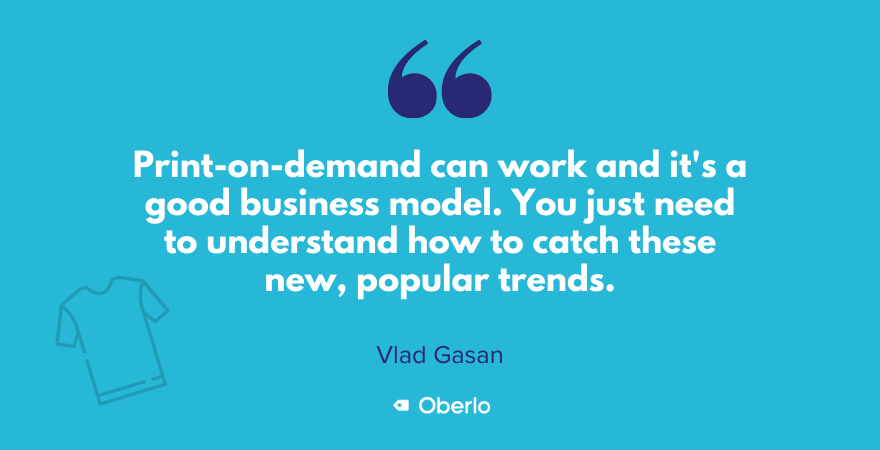
So for example, let's say something like the coronavirus happened. Now, I think Facebook doesn't allow you to make money on sensitive events, they don't allow that. But at the beginning of March, I actually saw a lot of T-shirts, people started selling these T-shirts, coronavirus, just saying some fun stuff like, "I survived COVID," and stuff like that.
But then, later on, a lot of these ads actually got banned. But a lot of people were able to make, I assume, hundreds of thousands of dollars in the beginning just because they caught this trend right away.
I also saw another store that was selling koala T-shirts. In Australia, you had a lot of these wildfires, and some people think that...
These people actually monetize sensitive events.
But I'm not sure if that's exactly what they did, but I just saw the engagement in these ads of people selling koala T-shirts, and engagement was crazy, so I would assume that these people made a lot of money. And on their website, they say that they donate 25 percent to charity.
And, personally, I don't know if it's true or not. I hope they actually did this, but the matter of fact is they probably made a lot of money just because they caught the trend. There are also other trends like political trends like, for example, the new presidential elections, or some local event in one of the states in the United States.
So if you know how to catch these trends and basically make money off of these trends, you can be successful with print-on-demand.
But if you just hire a designer who will design a bunch of cat and dog T-shirts, it's probably not gonna work out. You gotta be... I'd say, in order to succeed, you gotta be smarter than 95 percent of the people you're competing with. That's the only way to win.
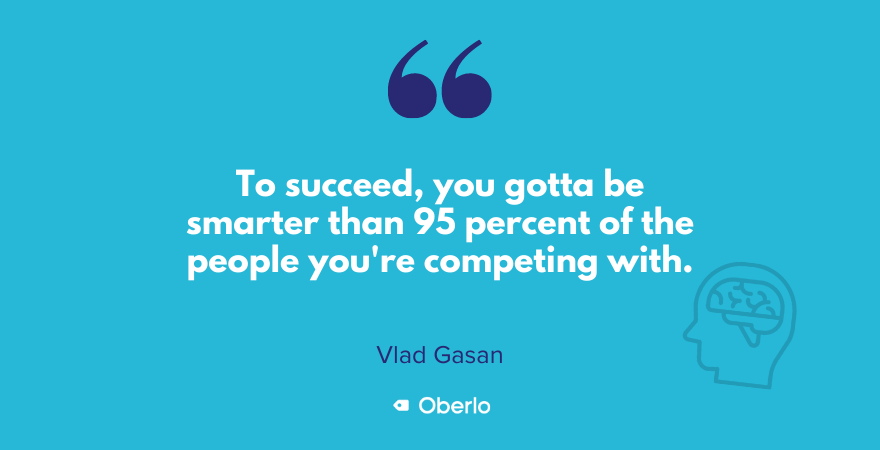
Feeding Facebook Pixel
Aleisha: It's an excellent point, and I also wanted to bring back to your Oberlo blog interview that you did recently with my lovely colleague, Allanah. And in it, you say it's not much about the product, it's more about the way you market it.
And that really, I think, is exactly what you've been saying. It's finding the niche, but it's also about how you actually put it out there and compete against multiple other companies that might be doing a similar thing.
How did that then, how... After the print-on-demand didn't necessarily work as much as you wanted it to, how did that then lead you to find your niche product? And if you feel comfortable, talking a bit about what it was or the sort of area it's in, that would also be great.
Vlad: Yeah, so again, after trying print-on-demand, I actually started selling a bunch of other random products. I tried posture correctors, I tried selling inflatable mattresses, and a bunch of other things. And I got some traction, but nothing really worked out.
And then I also started selling this other product. I don't wanna say what the product is, but I'll just say that this product helps to improve the quality of water. Yeah, so basically, it's an expensive product that helps to improve the quality of water.
And at the beginning, when I found this product and I started selling it, I just broke even for quite a long time and I didn't understand how to make it profitable. And then I thought, “Okay, maybe it's just not gonna work, the math doesn't add up.” So I decided, “You know what, maybe I should try something else.”
And yeah, I forgot about this product. And then one day I saw, just accidentally on AliExpress that another supplier actually had a similar product but with much better pictures. And I decided, you know what, maybe I should try relaunching this product with better pictures, and maybe I can also work on my product description, pricing, and all that stuff.
Also, one more thing, because I was already selling this product, I had some pixel data on my Facebook pixel, so basically when I relaunched the product, I already had data that I used to launch my ad, so my targeting was much better, and pixel... This pixel helped the Facebook algorithm to find customers much faster.
Aleisha: And so your customers were, just to say this, to jump onto that, if the pixel... You've got the pre-existing pixel and you were marketing to a similar demographic, then, the age and location?
Vlad: Yeah, the way I understand it, basically what Facebook pixel does, it collects the usage data, basically. You put the pixel on your website and then a lot of... And then you send traffic to your website from, let's say Facebook, Google, and maybe some other places, and then Facebook pixel collects all this data. Because Facebook knows a lot about us, Facebook knows where we live, our ages, what our behavior patterns are and what we buy.
And based on that data in the pixel, Facebook can help you as a marketer target different people in these very specific audiences.
So for example, let's say, when my pixel is mature enough, when it has a lot of events, and we'll say 5,000 events, 10,000 events, I can start targeting very broad audiences. For example, I can target anyone who's aged 40 plus only, and then this Facebook pixel power will help me find buyers pretty much anywhere because Facebook already knows where my buyers are, what they do, and the best time to target them.
So it's a very smart tool, this pixel, Facebook pixel. And I think this is what makes Facebook ads much more efficient than ads on any other platform. Just having this Facebook pixel and just training it, time... Well, time over and over.
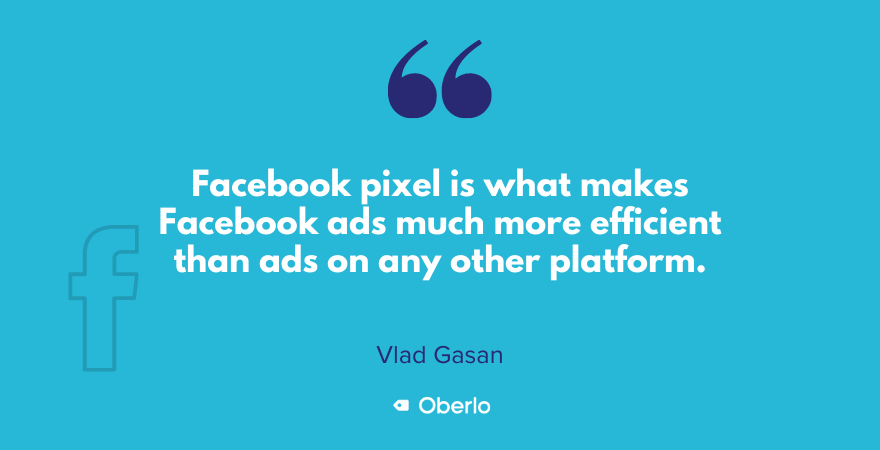
Aleisha: Yeah and giving it the time to do its job as well. I think a lot of people turn their ads off after two days and freak out and give up. But then it's really not giving the pixel the time to spread the love.
Vlad: Yeah, that's exactly what I did in the beginning. I would run ads for a couple of days, freak out, and turn everything off.
Aleisha: Well, it is hard when you're watching the money go and you think, "Oh my gosh, I'm just hemorrhaging money, there's nothing to do here." But then also, I suppose, yes, you might be spending money and not getting the sales, but it can sometimes take five to seven days to actually get something cooking, really. And yeah, it's a risk, but I suppose that's part of the deal of doing business. You gotta put the money out there and go for it.
Vlad: Exactly. And one other part that beginner entrepreneurs underestimate is, it's not just tough to build a business. And by building a business I mean you need to build the website, you need to find customers. It's really tough to manage your business in your own head, psychologically, because again, if you freak out when you...
Let's say when you lose $100 a day and you freak out, well, it's like, how can you grow this into a big company, into an ecommerce brand, if you freak out about losing $100 a day? It's just not possible.
So yeah, you have to build up this mental tolerance. And usually, you build it up over time, and then you start thinking critically in stressful situations.
And that's what I think is the secret to success: being able to think critically in stressful situations. And, honestly, this is something I'm still working on, and I think it's a never-ending process. But that's how you become a better entrepreneur, just learning how to do things and how to deal with stress at the same time.
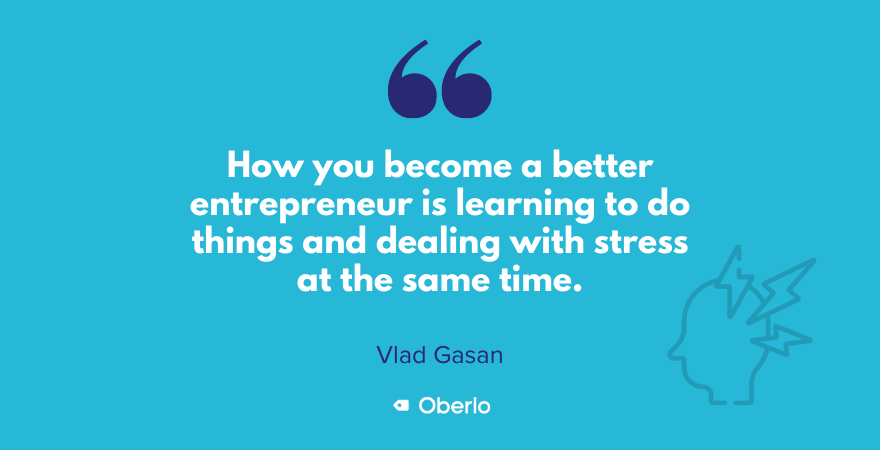
The Two Types of Dropshippers
Aleisha: Yeah, totally. Tell me a little bit more about how you used these experiences of running these sorts of other stores that weren't necessarily as profitable as you'd hope but that was certainly making some profit to then moving to the store that really, really went off.
Like you did over $200,000 in sales, this is later last year. Tell me about how that came to be and also how you really took the experiences from these other stores and made it work with this product.
Vlad: Yeah, so one thing I realized after a couple of months of being in this business is there are two types of dropshippers. The first type is people who would just quickly put together a website, try to sell something, and if after two to three days it doesn't work out, they'll start testing another product. They keep testing hundreds of products almost every day, they constantly test new products, and just they wanna see what's gonna take off.
And honestly, this approach actually works, you just gotta build a very good system for testing products and be prepared for cases like when you test ten products in a row and nothing works, and then you have to constantly find new products, put them on the website, create pages. It's a very time-consuming process.
Aleisha: Yeah.
Vlad: And there is another type of dropshipper. So these people, basically, what they do is force products into winners and this is what dropshippers say, "Oh, my product is a winner," which means that my product is selling well.
The way you force products into winners is basically you make a lot of different improvements.
And these improvements can mean one day you'll think about pricing and you'll experiment with different pricing models, then you'll improve your pictures. The next day you will write better testimonials, you'll talk to your customer, get some feedback on a product, then you will improve your description, then maybe you'll create some bundles and upsells, things like that.
So basically a bunch of different compounding improvements and this is how a mediocre product that nobody even thought about selling can become a winner. And that's what actually a lot of big brands do. For example, you've probably heard about brands like HiSmile, and Snow that sell these teeth whitening products.
Aleisha: Yeah.
Vlad: I wouldn't imagine them testing this teeth whitening product that they have for two days and then saying, "Oh well, we didn't get any sales. Let's wrap it up and try something else." They're like, "No, no one's gonna do it." What they do instead is test different ad angles, they test different images, descriptions and they pretty much test the hell out of the product and then they try different upsells, cross-sells, all that stuff.
And at the end, it actually ends up working because they just focus all of their attention on making sure that this product actually wins. That's how you build a real brand. You don't just try one product, give up and try something else.
You need to do everything in your power to force this product into a winner.
And I personally think most of the products can be forced into winners if you understand what the product is all about, if you understand the customer and if you understand how to make these little compounding improvements step-by-step.
Also, this is a great path to building a real brand because honestly, I believe that in dropshipping, I think it's a good business model. But if you wanna build a real business, a real brand, you better think about how you move from dropshipping to building the actual brand, how to find a good manufacturer, and how to keep selling the same product month over month, year over year, and how to keep innovating.
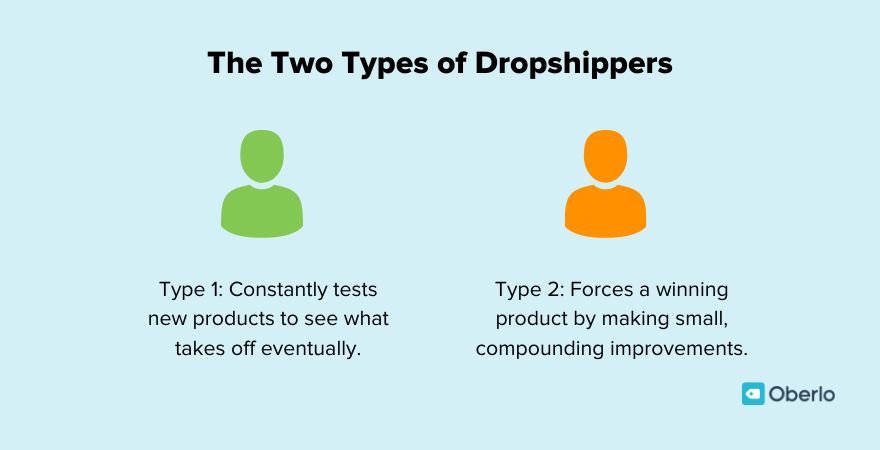
Making Improvements Bit by Bit
Aleisha: Yeah, 'cause you're right. The fatigue I think with some products, people could ride the wave but I suppose you gotta know when it's not working anymore and you're right, they're gonna move on to something else or as you said, build the brand and white label things going to manufacturing.
Vlad: Yeah. It's actually another problem. Yeah, it's actually a fun issue that you just brought up. A lot of people who don't give up right away, what they do, they'll do all these compounding improvements, all these little things and then they'll run this product for probably two to three months and then their audiences get fatigued, their ads get fatigued, and they think, "Okay, well I pretty much squeezed everything I could out of this product, let's move on."
But again, this is not what big brands do. If you look at Coca-Cola or maybe Coca-Cola is not the best example but if you look at them, they've been selling Coca-Cola for years. What they do, they just keep innovating, they keep changing recipes, they work on their marketing, they invest a lot of money into branding, into just understanding their user behavior and do all that stuff, they do a lot of research.
And obviously, small business owners don't have that much budget to invest in research and marketing but it's just the concept that we can use in our own businesses to make sure that we can succeed.
Because again, you don't wanna just give up on the product when you think that you exhausted all the possibilities and your ads are no longer working.
Maybe you can try different ad angles, maybe you can change your product photos, maybe you can find another supplier that offers a better, higher-quality version of the same products. There are so many things you can do and you can just keep running one product almost indefinitely if you know how to keep innovating and how to keep improving your ads, your product pages, description, and all that. It's a never-ending process.
Why You Should Always Have a Backup Supplier
Aleisha: You sort of rode that wave and you've made the money and then it sounds like the product that you were doing really well with took a bit of a dip. Was that because of the circumstances? Was it the time of year? Without giving anything away about the product, what do you think caused that? Was it just not fashionable anymore and what did you do after that, how did you then come to the conclusion that it's time to move on?
Vlad: Yeah, with this product, what actually happened was that I found a good factory that manufactured this product, and unfortunately, this was the only factory in China that had this type of product.
Aleisha: Wow.
Vlad: Again, I actually found a few other factories that had similar products but the quality just wasn't that good. And when I tried switching the product and my customers actually purchased the product that was sent from a different factory, I got very different feedback and all our customers actually complained that the product didn’t work as expected or the quality of the materials just wasn’t good.
So I was pretty much tied to my supplier and then one day something happened and this supplier said that they're not gonna be manufacturing this product anymore and that's basically how it all ended. Also, one thing that the audience can learn is if you start selling a product, make sure you have back-up suppliers.
You don't wanna run in the situation where you're basically dependent on one factory.
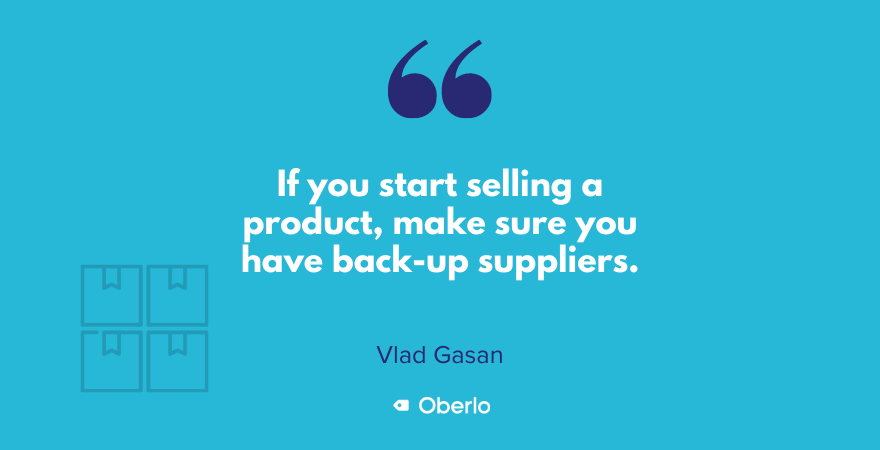
Aleisha: That's such a bummer for you though, Vlad, to have that success and then them to go, "Nope, we're stopping now. Forget it, we're packing up the tools."
Vlad: Yeah, actually I anticipated that it might happen but I just thought that maybe it's gonna be okay, maybe it will actually never happen. But I anticipated that it could happen and what I did actually when I worked with other factories, I actually asked them if they could manufacture the same type of product that this other factory had.
But for a lot of different reasons they said that they couldn’t because weren’t not sure if there was gonna be demand, they didn’t have these specific materials, or the price wasn't right. There were so many different things and I know so many different reasons why they couldn't manufacture this specific product, right?
Then I actually thought that I could build this into a real brand and I actually thought about white labeling it and then maybe later working with my manufacturer to make some product improvements. But yeah, unfortunately, they decided to stop the production, and yeah, that's pretty much how everything ended with that store.
General, One-Product, or Niche?
Aleisha: So now, I mean that's a real shame, but now you have this little template I suppose, to be able to roll out the same or a similar sort of product in the same category I suppose, to then run it all again. Is that something that interests you or are you ready for something new?
Vlad: Yeah, actually this is what I continued to do, just using... I keep using my framework to launch other products. But right now, I'm also testing one general store that is working pretty well.
Because one thing I realized is that some products, like that product I had, they require a lot of branding. If you wanna sell an expensive product, you need to work on your branding and really convey the benefits of your product. But if you're selling cheaper products that are more like impulse purchases, you don't need to have a big, cool brand.
Again, you just gotta know what's trending right now and what you can sell based on these trends. That's the path I decided to take and explore. And again, at this point, I think I'm kinda in between thinking about building this new brand and testing a bunch of different products on a general store.
And again, if you look at YouTube, a lot of people say general stores don't work or one-product stores don't work anymore. And I think it's all false.
General stores work. One-product stores work. Niche stores work. You just gotta know what you're doing and you gotta know how to market the products that you have in your store. It’s as simple as that.
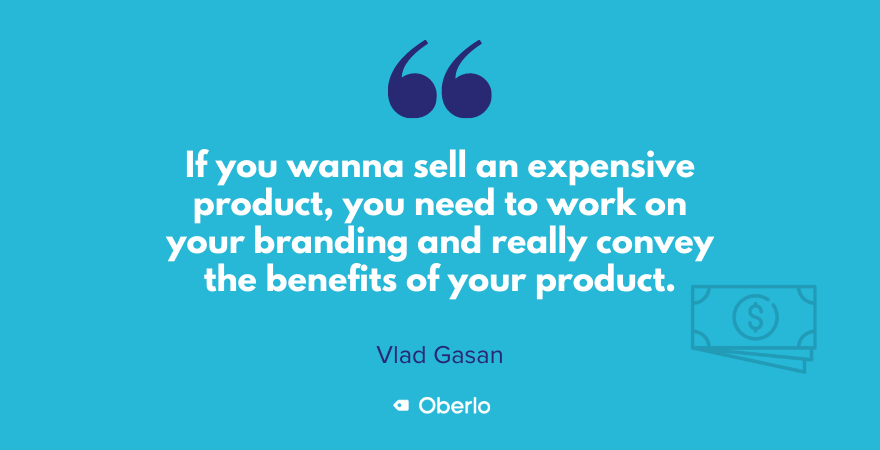
Aleisha: Yeah, I agree. I've interviewed lots of people that have had huge successes with general stores. But you're right, it's all about building pages that don't look scammy, pages that have really nice branding and fonts and logos and things that actually look legit. And also, just taking the time to market and run those ads.
You have a series of YouTube videos. You've got your own channel which I think is really good to plug here 'cause you give away lots of excellent advice especially in regards to the Facebook marketing and looking at dropshipping as well and what you've done.
Tell us where we can find you and a little bit more about how people can get in touch if they're interested.
Vlad: Yeah, you can just go to YouTube and type Dan Vlad in the YouTube search and my channel will pop up and you can do the same on Instagram. That's how you find me.
Aleisha: It's excellent. Yeah, and good on you for sharing all this information 'cause I think as you said, there is lots of stuff out there that's not necessarily helping people. It's probably hindering their success in this area, so that's great.
Vlad: Yeah. And the reason why I decided to upload all these videos is that I know how hard it is for beginners to start their own business and I just decided to create these videos to help people I know launch their own businesses without going through all the struggle that I went through.
And I know a lot of people, actually, they don't give this information for free, they charge money but I decided, "You know what? I don't think this is something that people should pay for."
Let's say if I wanted to build a course, I would probably build something like an advanced mentorship where I actually coach people and help them scale the stores that they already have but if they just wanna go from let's say, zero to $500 a day, I think this type of information should be available for free.
Aleisha: Well that's great, I'm sure people... Zero to $500 a day is pretty good and I'm sure a lot of people will be stoked to be making that sort of money, so it's great. And of course, you can go to oberlo.com and read the blog that is all about your experience. I will link to that in today's show notes and also in the podcast notes wherever you are listening to this podcast.
Vlad, thank you so much for your time. It was great to chat and learn more about your business and congratulations on your success.
Vlad: Thank you. It was great chatting with you as well.


